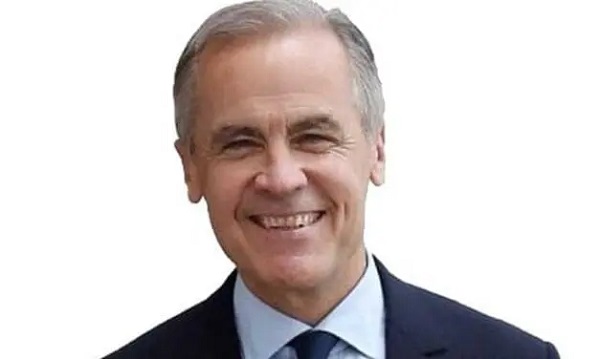COVID-19
Japanese study finds ‘significant increases’ in cancer deaths after third mRNA COVID doses

From LifeSiteNews
Cancer deaths started rising again in Japan in 2021, and one study concludes it ‘may be attributable to several mechanisms’ of the mRNA-based COVID vaccines.
A new study has found “statistically significant increases” in cancer deaths after taking a third dose of mRNA-based COVID-19 vaccines, according to a Japanese study published April 8 in the journal Cureus.
The study looked at age-adjusted mortality rates for multiple types of cancers from 2020 to 2022 in Japanese government data. “No significant excess mortality was observed during the first year of the pandemic (2020),” it says. “However, some excess cancer mortalities were observed in 2021 after mass vaccination with the first and second vaccine doses, and significant excess mortalities were observed for all cancers and some specific types of cancer (including ovarian cancer, leukemia, prostate cancer, lip/oral/pharyngeal cancer, pancreatic cancer, and breast cancer) after mass vaccination with the third dose in 2022.”
Notably, the rollout of the COVID vaccines coincided with an interruption and slowing of declines in cancer mortality rates that had been observed across all age groups over the span of the preceding decade. Third mRNA doses correlated with “significant excess mortalities” of all cancers, including breast, prostate, and ovarian cancer as well as leukemia. Almost all of the COVID vaccines at issue were mRNA-based, with 78% of those being from Pfizer and 22% from Moderna.
“For all cancers, we estimated the excess mortalities to be -0.4% (-0.9, 0.1), 1.1% (0.5, 1.8), and 2.1% (1.4, 2.8), respectively, indicating no excess in 2020 and statistically significant increases in 2021 and especially in 2022,” the authors write.
Changes in 2020 can be attributed to the height of the lockdowns forcing delays and cancellations of surgeries and other cancer treatments, but the researchers note several potential causal links between the vaccines and cancer deaths in 2021 and beyond.
“Some studies have shown that type I interferon (INF) responses, which play an essential role in cancer immunosurveillance, are suppressed after SARS-CoV-2 mRNA-LNP vaccination,” they write.
“SARS-CoV-2 vaccine has been shown to cause immunosuppression and lead to the reactivation of latent viruses such as varicella-zoster virus (VZV, human herpesvirus 3; HHV3) or human herpesvirus 8 (HHV8) in some cases,” the add. “These phenomena could also help explain the excess deaths from lip/oral/pharyngeal cancer in 2022 when mass vaccination with third and later doses was underway.”
The researchers conclude that “[t]hese particularly marked increases in mortality rates of these ERα-sensitive cancers may be attributable to several mechanisms of the mRNA-LNP vaccination rather than COVID-19 infection itself or reduced cancer care due to the lockdown. The significance of this possibility warrants further studies.”
“I have long suspected a cancer link to the vaccines just based on the science of immunology,” MIT researcher Stephanie Seneff told The Epoch Times in response to the study. “What I think is happening, broadly speaking, is that the vaccine is causing impairment of the innate immune response, which leads to an increased susceptibility to any infection, increased autoimmune disease, and accelerated cancer progression.”
A significant body of evidence links significant risks to the COVID vaccines, which were developed and reviewed in a fraction of the time vaccines usually take under former President Donald Trump’s Operation Warp Speed initiative. Among it, the federal Vaccine Adverse Event Reporting System (VAERS) reports 37,382 deaths, 215,734 hospitalizations, 21,616 heart attacks, and 28,299 myocarditis and pericarditis cases as of March 29, among other ailments. U.S. Centers for Disease Control & Prevention (CDC) researchers have recognized a “high verification rate of reports of myocarditis to VAERS after mRNA-based COVID-19 vaccination,” leading to the conclusion that “under-reporting is more likely” than over-reporting).
In 2021, Project Veritas shed light on some of the reasons for such under-reporting with undercover video from inside Phoenix Indian Medical Center, a facility run under the U.S. Department of Health & Human Services’ Indian Health Service program, in which emergency room physician Dr. Maria Gonzales laments that myocarditis cases go unreported “because they want to shove it under the mat,” and nurse Deanna Paris attests to seeing “a lot” of people who “got sick from the side effects” of the COVID shots, but “nobody” is reporting them to VAERS “because it takes over a half hour to write the damn thing.”
An analysis of 99 million people across eight countries published February in the journal Vaccine–the largest analysis to date–“observed significantly higher risks of myocarditis following the first, second and third doses” of mRNA-based COVID vaccines, as well as signs of increased risk of “pericarditis, Guillain-Barré syndrome, and cerebral venous sinus thrombosis,” and other “potential safety signals that require further investigation.” Earlier this month, the CDC was forced to release by court order 780,000 previously undisclosed reports of serious adverse reactions.
In Florida, a grand jury impaneled by Republican Gov. Ron DeSantis is currently investigating the manufacture and rollout of the COVID vaccines. In February, it released its first interim report on the underlying justification for Operation Warp Speed, which determined that lockdowns did more harm than good, that masks were ineffective at stopping COVID transmission, that COVID was “statistically almost harmless” to children and most adults, and that it is “highly likely” that COVID hospitalization numbers were inflated. The grand jury’s report on the vaccines themselves is highly anticipated.
COVID-19
Court compels RCMP and TD Bank to hand over records related to freezing of peaceful protestor’s bank accounts

The Justice Centre for Constitutional Freedoms announces that a judge of the Ontario Court of Justice has ordered the RCMP and TD Bank to produce records relating to the freezing of Mr. Evan Blackman’s bank accounts during the 2022 Freedom Convoy protest.
Mr. Blackman was arrested in downtown Ottawa on February 18, 2022, during the federal government’s unprecedented use of the Emergencies Act. He was charged with mischief and obstruction, but he was acquitted of these charges at trial in October 2023.
However, the Crown appealed Mr. Blackman’s acquittal in 2024, and a new trial is scheduled to begin on August 14, 2025.
Mr. Blackman is seeking the records concerning the freezing of his bank accounts to support an application under the Charter at his upcoming retrial.
His lawyers plan to argue that the freezing of his bank accounts was a serious violation of his rights, and are asking the court to stay the case accordingly.
“The freezing of Mr. Blackman’s bank accounts was an extreme overreach on the part of the police and the federal government,” says constitutional lawyer Chris Fleury.
“These records will hopefully reveal exactly how and why Mr. Blackman’s accounts were frozen,” he says.
Mr. Blackman agreed, saying, “I’m delighted that we will finally get records that may reveal why my bank accounts were frozen.”
This ruling marks a significant step in what is believed to be the first criminal case in Canada involving a proposed Charter application based on the freezing of personal bank accounts under the Emergencies Act.
Alberta
COVID mandates protester in Canada released on bail after over 2 years in jail

Chris Carbert (right) and Anthony Olienick, two of the Coutts Four were jailed for over two years for mischief and unlawful possession of a firearm for a dangerous purpose.
From LifeSiteNews
The “Coutts Four” were painted as dangerous terrorists and their arrest was used as justification for the invocation of the Emergencies Act by the Trudeau government, which allowed it to use draconian measures to end both the Coutts blockade and the much larger Freedom Convoy
COVID protestor Chris Carbert has been granted bail pending his appeal after spending over two years in prison.
On June 30, Alberta Court of Appeal Justice Jo-Anne Strekaf ordered the release of Chris Carbert pending his appeal of charges of mischief and weapons offenses stemming from the Coutts border blockade, which protested COVID mandates in 2022.
“[Carbert] has demonstrated that there is no substantial likelihood that he will commit a criminal offence or interfere with the administration of justice if released from detention pending the hearing of his appeals,” Strekaf ruled.
“If the applicant and the Crown are able to agree upon a release plan and draft order to propose to the court, that is to be submitted by July 14,” she continued.
Carbert’s appeal is expected to be heard in September. So far, Carbert has spent over two years in prison, when he was charged with conspiracy to commit murder during the protest in Coutts, which ran parallel to but was not officially affiliated with the Freedom Convoy taking place in Ottawa.
Later, he was acquitted of the conspiracy to commit murder charge but still found guilty of the lesser charges of unlawful possession of a firearm for a dangerous purpose and mischief over $5,000.
In September 2024, Chris Carbert was sentenced to six and a half years for his role in the protest. However, he is not expected to serve his full sentence, as he was issued four years of credit for time already served. Carbert is also prohibited from owning firearms for life and required to provide a DNA sample.
Carbert was arrested alongside Anthony Olienick, Christopher Lysak and Jerry Morin, with the latter two pleading guilty to lesser charges to avoid trial. At the time, the “Coutts Four” were painted as dangerous terrorists and their arrest was used as justification for the invocation of the Emergencies Act by the Trudeau government, which allowed it to use draconian measures to end both the Coutts blockade and the much larger Freedom Convoy occurring thousands of kilometers away in Ottawa.
Under the Emergency Act (EA), the Liberal government froze the bank accounts of Canadians who donated to the Freedom Convoy. Trudeau revoked the EA on February 23 after the protesters had been cleared out. At the time, seven of Canada’s 10 provinces opposed Trudeau’s use of the EA.
Since then, Federal Court Justice Richard Mosley ruled that Trudeau was “not justified” in invoking the Emergencies Act, a decision that the federal government is appealing.
-

 Agriculture2 days ago
Agriculture2 days agoCanada’s supply management system is failing consumers
-

 Business1 day ago
Business1 day agoCanada’s loyalty to globalism is bleeding our economy dry
-

 Alberta24 hours ago
Alberta24 hours agoAlberta Next: Alberta Pension Plan
-

 Alberta1 day ago
Alberta1 day agoCOVID mandates protester in Canada released on bail after over 2 years in jail
-

 armed forces24 hours ago
armed forces24 hours agoCanada’s Military Can’t Be Fixed With Cash Alone
-

 International1 day ago
International1 day agoTrump transportation secretary tells governors to remove ‘rainbow crosswalks’
-

 Business1 day ago
Business1 day agoCarney’s spending makes Trudeau look like a cheapskate
-

 Crime2 days ago
Crime2 days agoProject Sleeping Giant: Inside the Chinese Mercantile Machine Linking Beijing’s Underground Banks and the Sinaloa Cartel






